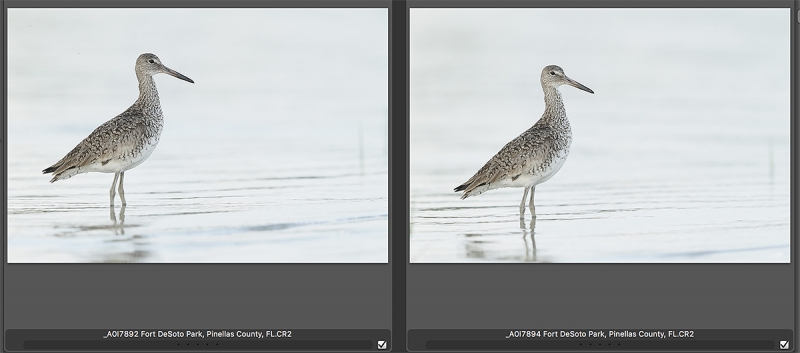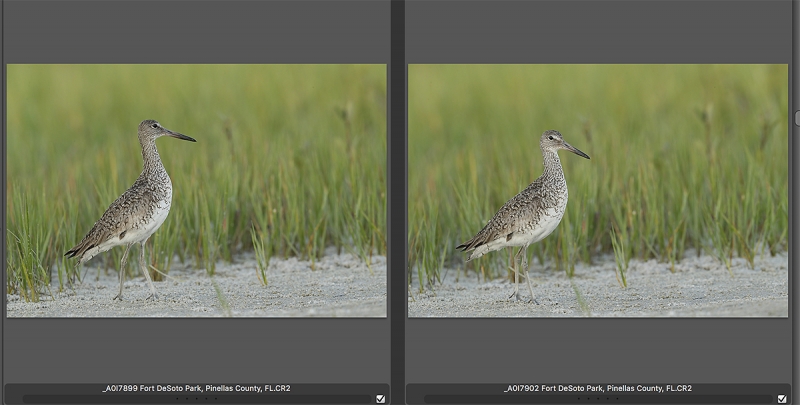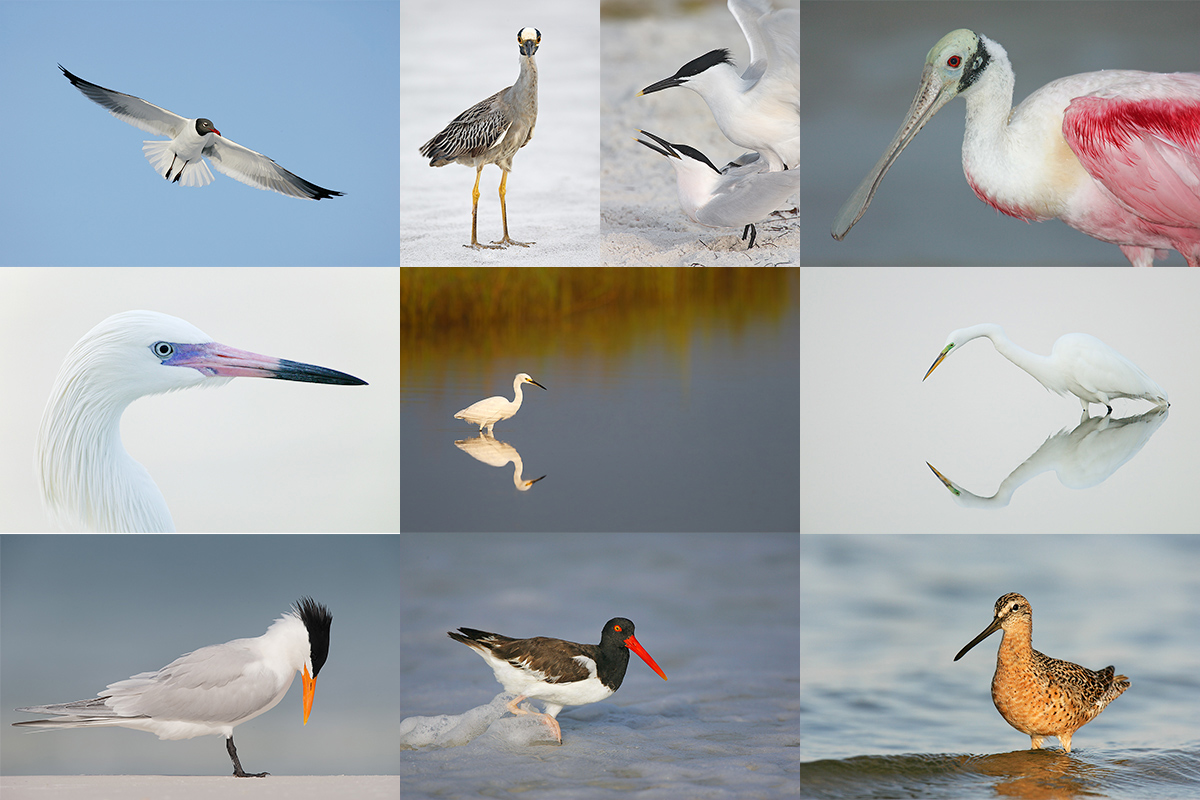Stuff
On Thursday in the Keio Plaza Hotel in Tokyo I enjoyed a day of resting comfortably, catching up on jet-lag, exercising, and stock-piling blog posts. I should have good internet access every day from now until the end of the trip. I get home late on the last day of February.
Gear Questions and Advice
Too many folks attending BAA IPTs and dozens of folks whom I see in the field, and on BPN, are–out of ignorance–using the wrong gear, especially when it comes to tripods and more especially, tripod heads… Please know that I am always glad to answer your gear questions via e-mail.
The Streak: 454
Today’s blog post marks a totally insane, irrational, illogical, preposterous, absurd, completely ridiculous, unfathomable, silly, incomprehensible, what’s wrong with this guy?, makes-no-sense, 454 days in a row with a new educational blog post. As always–and folks have been doing a really great for a long time now–please remember to use our B&H links for your major gear purchases. For best results use one of our many product-specific links; after clicking on one of those you can continue shopping with all subsequent purchases invisibly tracked to BAA. Your doing so is always greatly appreciated. Please remember: web orders only. And please remember also that if you are shopping for items that we carry in the BAA Online Store (as noted in red at the close of this post below) we would of course appreciate your business.
Editing and Head Angle Practice with Four Willet Images
I selected an AF point that was two AF points to the left of the center AF point (to place the bird back in the frame)/AI Servo/Expand/Rear Focus AF. Image A was rear focus and re-compose. With the others, AF was active at the moment of exposure and the selected AF point was on the side of the bird’s breast. Click here to see the latest version of the Rear Focus Tutorial. Click on the image to see a larger version.
|
|
Left is A. Right is B. |
…..
|
|
Left is C. Right is D. |
Editing and Head Angle Practice with Four Willet Images
1: Which image has the worst head angle?
2: Which two images have perfect head angles?
3: Which two images would you delete?
4: Which do you think is the strongest image? Please let us know why you made your choice.
Please remember that the more folks join the fun the more everyone learns. Including you. And me.
Willets are silly tame at Fort DeSoto in all seasons and in spring they are looking their best in breeding plumage. A few pairs actually breed in the park. See details on the Fort DeSoto Spring IPT immediately below.
|
DeSoto in spring is rife with tame and attractive birds. From upper left clockwise to center: breeding plumage Dunlin, dark morph breeding plumage Reddish Egret displaying, breeding plumage Laughing Gull/front end vertical portrait, breeding plumage Laughing Gull with prey item, Laughing Gull on head of Brown Pelican, screaming Royal Tern in breeding plumage, Royal Terns/pre-copulatory stand, Laughing Gulls copulating, breeding plumage Laughing Gull/tight horizontal portrait, Sandwich Tern with fish, and a really rare one, White-rumped Sandpiper in breeding plumage, photographed at DeSoto in early May. |
Fort DeSoto Spring IPT/April 19-22, 2017. (meet & greet at 2pm on Wednesday April 19 followed by an afternoon session) through the full day on Saturday April 22. 3 1/2 DAYs: $1599. Limit 10. To save your spot, please call and put down a non-refundable deposit of $499.00.
I will be offering small group (Limit 3) Photoshop sessions on Sunday afternoon and Monday morning if necessary. Details on that TBA.
Fort DeSoto is one of the rare locations that might offer great bird photography 365 days a year. It shines in spring. There will Lots of tame birds including breeding plumage Laughing Gull and Royal and Sandwich Terns. With luck, we will get to photograph all of these species courting and copulating. There will be American Oystercatcher and Marbled Godwit plus sandpipers and plovers, some in full breeding plumage. Black-bellied Plover and Red Knot in stunning breeding plumage are possible. There will be lots of wading birds including Great and Snowy Egrets, both color morphs of Reddish Egret, Great Blue, Tricolored and Little Blue Heron, Yellow-crowned Night-Heron, and killer breeding plumage White Ibis. Roseate Spoonbill and Wood Stork are possible and likely. We should have lots of good flight photography with the gulls and terns and with Brown Pelican. Nesting Least Tern and nesting Wilson’s Plover are possible.
We will, weather permitting, enjoy 7 shooting sessions. As above, our first afternoon session will follow the meet and greet at 2pm on Wednesday April 19. For the next three days we will have two daily photo sessions. We will be on the beach early and usually be at lunch (included) by 11am. We will have three indoor sessions. At one we will review my images–folks learn a ton watching me choose my keepers and deletes–why keep this one and delete that one? The second will be a review of your images so that I can quickly learn where you need help. For those who bring their laptops to lunch I’d be glad to take a peek at an image or three. Day three will be a Photoshop session during which we will review my complete workflow and process an image or two in Photoshop after converting them in DPP. Afternoon sessions will generally run from 4:30pm till sunset. We photograph until sunset on the last day, Saturday, April 22. Please note that this is a get-your-feet and get-your-butt wet and sandy IPT. And that you can actually do the whole IPT with a 300 f/2.8L IS, a 400 f/4 ID DO lens with both TCs, or the equivalent Nikon gear. I will surely be using my 500 II as my big glass and have my 100-400 II on my shoulder.
|
DeSoto in spring is rife with tame and attractive birds. From upper left clockwise to center: Laughing Gull in flight, adult Yellow-crowned Night-Heron, copulating Sandwich Terns, Roseate Spoonbill, Great Egret with reflection, Short-billed Dowitcher in breeding plumage, American Oystercatcher, breeding plumage Royal Tern, white morph Reddish Egret, and Snowy Egret marsh habitat shot. |
What You Will Learn
You will learn to approach free and wild birds without disturbing them, to understand and predict bird behavior, to identify many species of shorebirds, to spot the good situations, to understand the effects of sky and wind conditions on bird photography, to choose the best perspective, to see and understand the light, to get the right exposure every time after making a single test exposure, and to design pleasing images by mastering your camera’s AF system. And you will learn how and why to work in Manual mode (even if you are scared of it).
The group will be staying at the Red Roof Inn, St. Petersburg: 4999 34th St. North, St Petersburg, FL 33714. The place is clean and quite inexpensive. Please e-mail for room block information. And please call Jim or Jennifer at 863-692-0906 to register. All will need to purchase an Annual Pass early on Tuesday afternoon so that we can enter the park at 6am and be in position for sunrise opportunities. The cost is $75, Seniors $55. Tight carpools will be needed and will reduce the per person Annual Pass costs. The cost of three lunches is included. Breakfasts are grab what you can on the go, and dinners are also on your own due to the fact that we will usually be getting back to the hotel at about 9pm. Non-photographer spouses, friends, or companions are welcome for $100/day, $350 for the whole IPT.
BIRDS AS ART Fort DeSoto In-the-Field Meet-up Workshop (ITFW): $99
Fort DeSoto Spring In-the-Field Cheap Meet-up Workshop (ITFW) on the morning of April 22, 2017: $99
Join me on the morning of April 22, 2017 for 3-hours of photographic instruction at Fort DeSoto Park. Beginners are welcome. Lenses of 300mm or longer are recommended but even those with 70-200s should get to make some nice images. Teleconverters are always a plus.
You will learn the basics of digital exposure and image design, autofocus basics, and how to get close to free and wild birds. We should get to photograph a variety of wading birds, shorebirds, terns, and gulls. This inexpensive morning workshop is designed to give folks a taste of the level and the quality of instruction that is provided on BIRDS AS ART Instructional Photo-tours. I hope to meet you there.
To register please call Jim or Jennifer during weekday business hours with a credit card in hand to pay the nominal registration fee. Your registration fee is non-refundable. You will receive a short e-mail with instructions, gear advice, and meeting place one week before the event.
Please Remember to use my Affiliate Links and to Visit the New BAA Online Store 🙂
To show your appreciation for my continuing efforts here, we ask, as always, that you get in the habit of using my B&H affiliate links on the right side of the blog for all of your photo and electronics purchases. Please check the availability of all photographic accessories in the New BIRDS AS ART Online Store, especially the Mongoose M3.6 tripod head, Wimberley lens plates, Delkin flash cards and accessories, and LensCoat stuff.
As always, we sell only what I have used, have tested, and can depend on. We will not sell you junk. We know what you need to make creating great images easy and fun. And please remember that I am always glad to answer your gear questions via e-mail.
I would of course appreciate your using our B&H affiliate links for all of your major gear, video, and electronic purchases. For the photographic stuff mentioned in the paragraph above, and for everything else in the new store, we, meaning BAA, would of course greatly appreciate your business. Here is a huge thank you to the many who have been using our links on a regular basis and those who will be visiting the New BIRDS AS ART Online Store as well.
Be sure to like and follow BAA on Facebook by clicking on the logo link upper right. Tanks a stack.
Typos
In all blog posts and Bulletins, feel free to e-mail or to leave a comment regarding any typos or errors. Just be right :).


















Worst angle. C
B & D are perfect
Delete C
Best image D..Good contrast with background
1: Which image has the worst head angle?
C – the bird is not looking our direction
2: Which two images have perfect head angles?
B & D – the bill is a few degrees towards us, giving a better parallel to the camera sensor thus focus. It also keeps us more engaged with the bird.
3: Which two images would you delete?
C is a given (for me), and I’d delete A as well as the bird has a look of ‘being caught’ about him.
4: Which do you think is the strongest image?
I say D. Not only do I think it is the strongest image, there’s this great fella I ‘study’ named Artie, and he always says if you have the ability to get some green in the photo do it. 😉
Hope you are finding snow with those monkeys…
Could be. Or not 🙂
a
Hi Artie,
Image C has the weakest head angle. B and D have perfect head angles. To answer the question of deleting, I would delete images A and C. I think image D is the strongest because the diffused green background contrasts nicely with the bird, giving it a nice outline.
Jake
1. C
2. B and D
3. A and C
4. B
1 – image c has the worst head angle
2 – images b and d have best had angle
3 – I would delete a and c
4 – I prefer image b with the clan background.
Hello All,
Artie has graciously given me permission to post this. I received it in my weekly email from Tucson Audubon :
Speak Up for America’s Conservation Legacy
#TogetherForBirds
Are birds and wildlife important to you? If so, please sign American Bird Conservancy’s (ABC) Together for Birds petition now. Tell the new Administration and Congress that you won’t stand by to see bedrock laws like the Endangered Species Act rolled back and public lands of critical importance to birds developed. ABC will present the petition and signatures to the new Administration and Congress on Earth Day 2017 (April 22). Please sign and share to show your support for bird conservation and help ensure that the progress we have made in recent decades is preserved
copy and paste the link below into your web browser. it will bring you to the petition – https://secure2.convio.net/abcb/site/Advocacy;jsessionid=936B10B7244DF3AABA663B949A3D69DA.app212a?cmd=display&page=UserAction&id=290
I signed!
a
1. Worst head angle? C
2. Perfect head angle? B&D
3. Which would you delete? A&C
4. Which is the strongest image? Hard question. Probably D.
I had a hard time choosing between B and D. B is certainly a cleaner picture, with no distractions in the background. The bird is more isolated. D gives more of a sense of place. I like both. I think I like D a bit more. I’m a sucker for bird feet, and it kind of bugs me that the feet are underwater in B…
1. Which image has the worst head angle?
C – because the Willet is looking away from you.
2. Which two images have perfect head angles?
A – Because the eye is dead on you
D – because the tame little Willet is looking and walking towards you.
3. Which two images would you delete?
None.
4. Which do you think is the strongest image?
B – because the head angle is almost identical to D and image B is leaning more to the right of the histogram making a brighter and more pleasing image. The Willet’s coloring pops on the soft white background. I would remove the vertical line on the right side of the image.
Worst head angle: C by a wide margin! He’s looking well away from you.
Perfect angles: B and D
Deletes: A and C
Strongest: B. I like the simpler high-key background as opposed to the grass, and the water (for me) complements the bird’s colors instead of conflicting with them, as does the bright green in image D.
1: Which image has the worst head angle? C
2: Which two images have perfect head angles? B, and D is good but not perfect from my viewpoint just a little to much head turn for my taste.
3: Which two images would you delete? A & C …..assuming I had all 4 of course!! (I quite like C)
4: Which do you think is the strongest image? Please let us know why you made your choice. D because all the bird is well rendered including the feet and I like the background more than that in A or B
Is it just me – B and D birds seem to be less engaged, almost like they have been offended and are disengaging. A and C seem to have the bird more interested in the viewer. It’s like it’s more of a 3 dimensional effect than just the angle.
Jack
C, b & d, c, b ( I like the soft background, and I think the vegetation detracts from the image of the bird by comparison.
Question 1: C; 2: B & D; 3: C; 4: D. Image D has a little more action against a contrasting background. The subject is not only looking into the picture; it appears to be walking into the picture.
1. C
2. B &D
3. A & C
4. B . Because the back ground of D is distracting. B offers subject isolation with the added benefit of being able to blow out the background therefore minimizing any and all noise, especially at ISO1600. Although the 1Dxii could handle 1600 with ease, the white BG make the noise levels that much better.
1: Which image has the worst head angle? C
2: Which two images have perfect head angles? B and D
3: Which two images would you delete? A & C
4: Which do you think is the strongest image? Please let us know why you made your choice.
D. I like the green patch which give a much natural look than B
Worst – C
Perfect – B, D
Delete two – A, C
Best image – D, the bird is engaging the viewer with the slight head turn, and the habitat is perfect.
Worst: C
Best: B and D
Delete: A and C
Strongest: D. Great head angle (like B), but I prefer the lighting on D. To me, it is a stronger image.
A & C are bad angles, agree that C is worse
B & D have better angles..I like D
I would delete A, B, C
The green softer background and alert head angle make D the best.
1 – C
2 – B & D
3 – A & C
4 – B
PS I just found this blog (link below) by a NZ photographer, which may interest you if you have not already seen it….
http://www.creative-photographer.com/changed-canon-fujifilm/?utm_source=Newsletter+subscribers&utm_campaign=a937437db4-2017_02_08_Mastering_Photography_newsletter&utm_medium=email&utm_term=0_a4f3211a41-a937437db4-83768565
1: Which image has the worst head angle? C
2: Which two images have perfect head angles? B & D
3: Which two images would you delete? C
4: Which do you think is the strongest image? I like D, I think it
pops a little more with the green background.
Doug